HCIP-Cloud Computing V4.0 Certification Exam H13-527 Dumps Are Available
Most candidates are looking for the H13-527-ENU exam dumps to complete HCIP-Cloud Computing V4.0 certification. Are you the one of them. If yes, we highly recommend you to choose the new H13-527-ENU dumps from DumpsBase, which would be the great online resource for HCIP-Cloud Computing V4.0 certification. HCIP-Cloud Computing V4.0 Certification Exam H13-527-ENU Dumps are available with 180 practice exam questions and answers. It must be clear that reading H13-527-ENU practice exam dumps carefully will help you pass Huawei HCIP Cloud Computing V4.0 certification H13-527-ENU exam successfully.
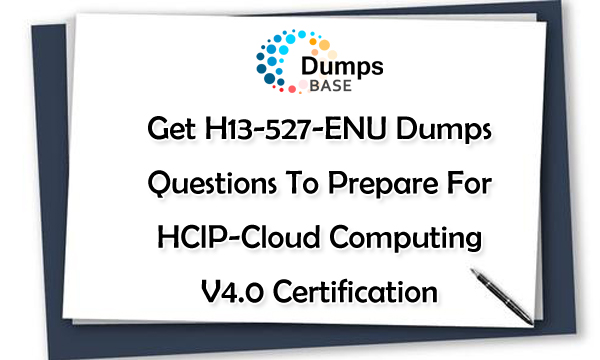
HCIP-Cloud Computing V4.0 H13-527-ENU Exam Is One OF The Cloud Computing Professional Exam
Huawei certification becomes more and more popular, which is committed to developing new ICT professionals in the digital era and building a healthy ICT talent ecosystem. Currently, it has three categories, including ICT Infrastructure Certification, Platform and Service Certification, and ICT Vertical Certification.
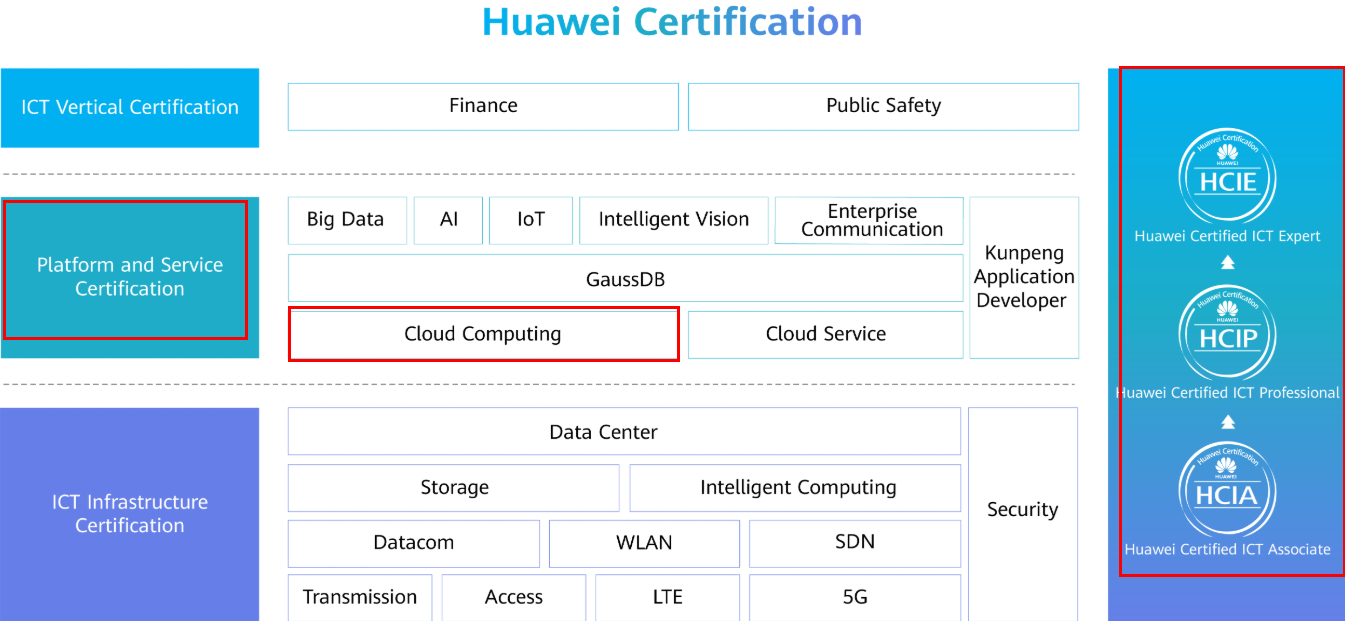
All the Huawei certifications cover engineers, senior engineers, and experts in each ICT technical field, meeting the requirements of all levels of ICT professionals.
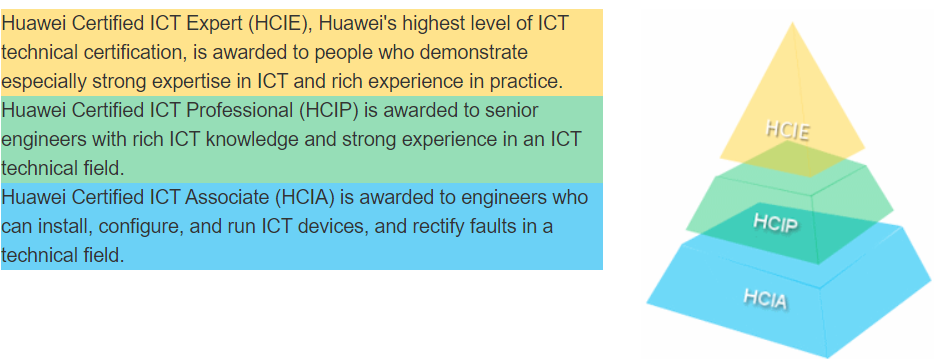
Cloud Computing certification is one of Platform and Service certifications, which have three levels including five certifications totally.
Associate HCIA
HCIA-Cloud Computing certification is the only one in associate level, which prove you can use virtualization technology to build cloud computing and perform basic operations of cloud computing. It requires you take and pass H13-511 exam to complete the HCIA-Cloud Computing certification.
Professional HCIP
The professional level contains three certifications as listed.
HCIP-Cloud Computing-OpenStack
HCIP-Cloud Computing-OpenStack certification requires you to take and pass H13-525 exam successfully. Earning HCIP-Cloud Computing-OpenStack certification proves that you are Mastering the open source OpenStack daily management and O&M methods, having the O&M capabilities of large and medium-sized OpenStack cloud computing environments.
HCIP-Cloud Computing-Container
The professionals who hold HCIP-Cloud Computing-Container certification understood and mastered the open-source Docker and Kubernetes theories, have the O&M skills of large container clouds. This certification requires you to take and pass H13-526 exam.
HCIP-Cloud Computing
The available certification currently is HCIP-Cloud Computing V4.0, which proves that you are able to deploy and manage Huawei FusionSphere cloud operating system and FusionAccess desktop solution. Most candidates may be familiar with the HCIP-Cloud Computing V3.0, which requires to complete three exams, including H13-522, H12-523, H13-524. HCIP-Cloud Computing V3.0 certification has been officially offline on May 27, 2020. Now you need to complete H13-527 exam to achieve HCIP-Cloud Computing V4.0 certification.
Expert HCIE
Those who want to ahieve HCIE-Cloud Computing certification will have deep understanding of the cloud computing technologies and the knowledge of cloud computing deployment, O&M, migration, troubleshooting, and backup and DR of large and medium-sized enterprises, and you have the capabilities of building an enterprise cloud computing platform using Huawei cloud computing products. It requires you answer three exams as listed:
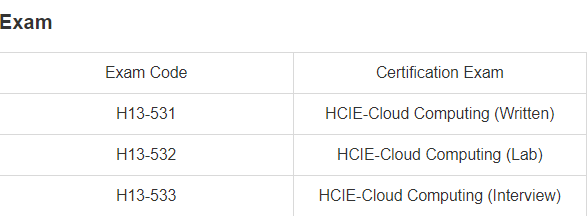
HCIP-Cloud Computing V4.0 H13-527 Exam Is Available In English Only
HCIP-Cloud Computing V4.0 H13-527 Exam requires you to complete in 90 minutes. And you need to know, H13-527 exam is available in English only.

To pass H13-527 exam for HCIP-Cloud Computing V4.0 exam, you need to master the skills as following and know the key points clearly:
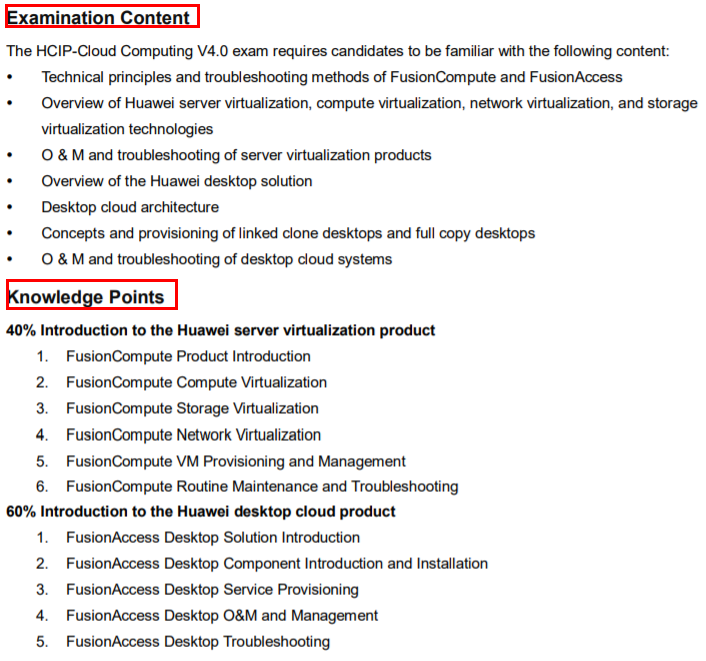
H13-527 Free Dumps Are Available For Checking HCIP-Cloud Computing V4.0 H13-527 Exam Dumps
Which of the following descriptions about FusionCompute is correct?
A. VRM supports both virtual deployment and physical deployment. Single node deployment is recommended to reduce the resource occupation of the cluster.
B. FusionCompute includes two functional modules, CNA and VRM. CNA is a virtualized operating system that provides virtualization capabilities for computing, storage and network resources. VRM is used for virtual resource management.
C. The CNA virtualization system uses sojourn virtualization.
D. VRM can manage virtualized resources and physical resources.
Answer: B
What are the functions of the VRM module in FusionCompute? (Multiple choice)
A. Manage the life cycle of virtual machines in the cluster and the distribution and migration of virtual machines on settlement nodes.
B. Manage block storage resources in the cluster
C. Assign an IP address to the virtual machine
D. Manage network resources (IP/VLAN) in the cluster.
Answer: ABCD
What are the functions of CNA in FusionCompute? (Multiple choice)
A. Manage virtual machines on compute nodes.
B. Manage computing, storage and network resources on computing nodes.
C. Manage the life cycle of virtual machines in the cluster and the distribution and migration of virtual machines on computing nodes
D. Provide virtual computing functions.
Answer: ABD
Which of the following descriptions about virtualization is wrong?
A. With virtualization technology, one physical machine can run multiple virtual machines at the same time.
B. Virtual machines can run operating systems and applications just like physical machines.
C. With virtualization, physical devices are no longer needed.
D. Computing virtualization can realize the reuse of computing resources.
Answer: C
What resources can be used to create virtualized data storage in FusionCompute? (Multiple choice)
A. FC-SAN
B. IP-SAN
C. FusionStorage Block
D. NAS
Answer: ABD
The non-uniform memory architecture solves the scalability problem in multi-processor systems.
A. True
B. False
Answer: A
When FusionCompute enables memory reuse, virtual machine hot migration is performed. If part of the memory data of the virtual machine is in the swap space, the migration time will be longer.
A. True
B. False
Answer: A
What CPU types are not supported by IMC policy? (Multiple choice)
A. Kunpeng
B. INTEL
C. Hisilicon
D. AMD
Answer: ACD
What is the value of the storage hot migration feature? (Multiple choice)
A. Load balancing of storage resources can be achieved
B. Provide basic capabilities for storage dynamic resource scheduling
C. The storage software and hardware can be upgraded without interrupting the business.
D. Support for thin disks to be changed to ordinary disks after migration to improve virtual machine disk performance
Answer: ABCD
Which of the following features does the CPU QoS function of Huawei FusionCompute virtual machine include? (Multiple choice)
A. CPU online increase
B. CPU limit
C. CPU share
D. CPU reservation
Answer: BCD
The customer storage system needs to be upgraded. An existing virtual machine has been bound to the host. Which of the following technologies is recommended to upgrade the storage system online?
A. Virtual machine hot migration to change the host
B. Virtual hot migration changes the host and data storage
C. Unable to meet demand
D. Virtual machine hot migration changes data storage
Answer: D
What are the parameters that need to be filled in when FusionCompute is connected to IP-SAN storage? (Multiple choice)
A. Storage management IP
B. Storage service port address
C. Username and password
D. Storage resource type
Answer: ABD
Which of the following description is correct based on source and destination IP and port load sharing algorithm?
A. This mode is highly reliable, but the network traffic will only be shared by one network card, and the other network card serves as a backup
B. When the message contains IP and port, use the source destination IP port and MAC for load sharing; when the message has only IP address, use IP address and MAC for load sharing; when the message has only MAC address, use MAC address for load sharing
C. This mode is generally used in scenarios where most of the network traffic is inside the Layer 2 network. This network traffic can be evenly hashed by MAC
D. This mode uses network traffic to be sent to each port completely and evenly, but a large number of messages may be out of order
Answer: B.
Which of the following description of the memory QoS of FusionCompute is wrong? (Multiple choice)
A. Memory QoS technology is mainly realized by setting memory reservation and memory share
B. After enabling memory QoS, the memory space that the virtual machine can use can exceed the memory size set by the virtual machine
C. Through memory QoS, the problem of resource preemption during memory reuse can be solved
D. Memory QoS technology is as effective as physical machines
Answer: ABD
What are the scenarios where the virtual machine in FusionCompute cannot perform hot migration? (Multiple choice)
A. The optical drive is mounted
B. USB is mounted
C. The virtual machine state is dormant
D. The virtual machine has a snapshot
Answer: ABC
